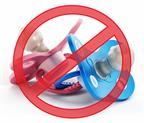Cleft Lip, Cleft Palate Surgery, Pediatric, Care After
The following information offers guidance on how to care for yourself after your procedure. Your health care provider may also give you more specific instructions. If you have problems or questions, contact your health care provider.
What can I expect after the procedure?
After the procedure, it is common for children to:
Be sleepy and groggy for most of the first day.
Be more fussy than usual for the first week.
Have trouble sleeping for the first week.
Have swelling or bruising on their mouth and face. This should go away within a week.
Follow these instructions at home:
Eating and drinking
Follow instructions from your child's health care provider about feeding and diet. These may vary depending on the age of your child. You may be told to:
Use a special bottle to feed your child.
Use a plastic utensil (a special spoon) to put liquids or soft foods in your child's mouth.
Not use a straw or metal utensils to feed your child.
Only give your child liquids and soft foods until your child's health care provider says it is ok to change your child's food.
Incision care

- Follow instructions from your child's health care provider about how to take care of your child's incisions. Make sure you:
Wash your hands with soap and water for at least 20 seconds before and after you change your child's bandage (dressing). If soap and water are not available, use hand sanitizer.
Change your child's dressing as told by your child's health care provider.
Leave stitches (sutures), skin glue, or adhesive strips in place. These skin closures may need to stay in place for 2 weeks or longer. If adhesive strip edges start to loosen and curl up, you may trim the loose edges. Do not remove adhesive strips completely unless your child's health care provider tells you to do that.
- Check your child's incision areas every day for signs of infection. Check for:
- Until the incisions have healed:
Do not let your child use a pacifier.
Do not let your child suck on his or her fingers.
Protect your child from the sun by having your child wear a hat with a wide brim. Make sure there is enough shade in the area where your child wants to play.
General instructions
Give over-the-counter and prescription medicines only as told by your child's health care provider.
If tubes were put in your child's nose, do not take them out unless your child's health care provider tells you to do that.
Follow any special instructions as told by your child's health care provider for activity restrictions.
Keep all follow-up visits. This is important.
Contact a health care provider if your child:
- Has signs of infection at the site of the incisions, such as:
-
Is not eating or drinking comfortably.
-
Is extra fussy and cannot be comforted, or seems to be in pain.
-
Has trouble making sounds that are appropriate for a child of the same age.
-
Vomits for more than 2 days after going home from the hospital.
-
Has a fever.
Summary
-
After the procedure, it is common for children to have swelling or bruising on their mouth and face. This should go away within a week.
-
Follow instructions from your child's health care provider about feeding and diet for your child.
-
Give over-the-counter and prescription medicines only as told by your child's health care provider.
-
Keep all follow-up visits. This is important.
This information is not intended to replace advice given to you by your health care provider. Make sure you discuss any questions you have with your health care provider.
